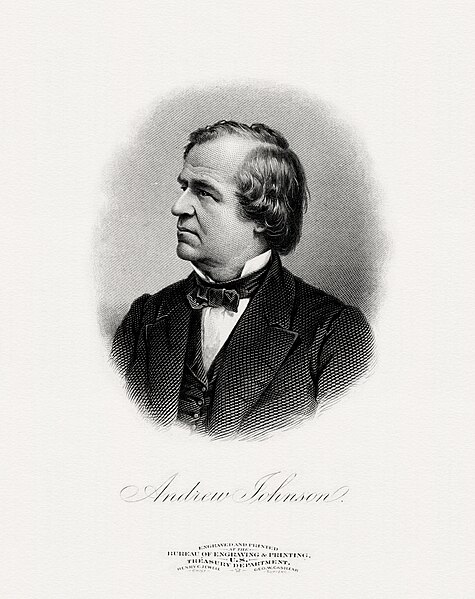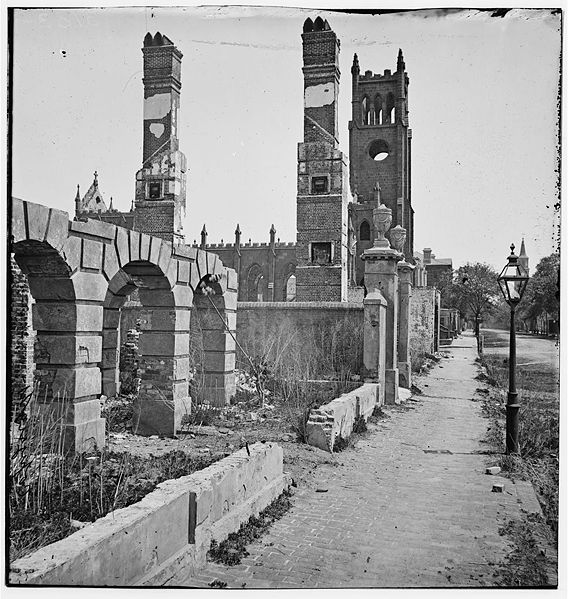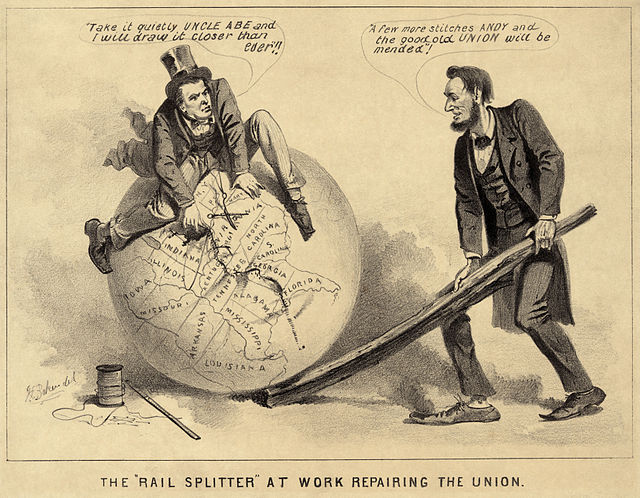Presidency of Andrew Johnson
The presidency of Andrew Johnson began on April 15, 1865, when Andrew Johnson became President of the United States upon the assassination of President Abraham Lincoln, and ended on March 4, 1869. He had been Vice President of the United States for only six weeks when he succeeded to the presidency. The 17th United States president, Johnson was a member of the Democratic Party before the Civil War and had been Lincoln's 1864 running mate on the National Union ticket, which was supported by Republicans and War Democrats. Johnson took office as the Civil War came to a close, and his presidency was dominated by the aftermath of the war. As president, Johnson attempted to build his own party of Southerners and conservative Northerners, but he was unable to unite his supporters into a new party. Republican Ulysses S. Grant succeeded Johnson as president.
Presidency of Andrew Johnson
Contemporary woodcut of Johnson being sworn in by Chief Justice Chase as Cabinet members look on, April 15, 1865
BEP engraved portrait of Johnson as president
Carte de visite depicting President Johnson encircled by portraits of William Seward, Edwin Stanton, James Speed, William Dennison, Gideon Welles, and John P. Usher (U-M William L. Clements Library via JSTOR)
The Reconstruction era was a period in United States history following the American Civil War, dominated by the legal, social, and political challenges of abolishing slavery and reintegrating the former Confederate States of America into the United States. During this period, three amendments were added to the United States Constitution to grant equal civil rights to the newly freed slaves. Despite this, former Confederate states often used poll taxes, literacy tests, and intimidation to control people of color.
The distribution of wealth per capita in 1872, illustrating the disparity between North and South in that period
The Southern economy had been ruined by the war. Charleston, South Carolina: Broad Street, 1865
A political cartoon of Andrew Johnson and Abraham Lincoln, 1865, entitled "The Rail Splitter At Work Repairing the Union". The caption reads (Johnson): "Take it quietly Uncle Abe and I will draw it closer than ever." (Lincoln): "A few more stitches Andy and the good old Union will be mended."
Monument in honor of the Grand Army of the Republic, organized after the war








